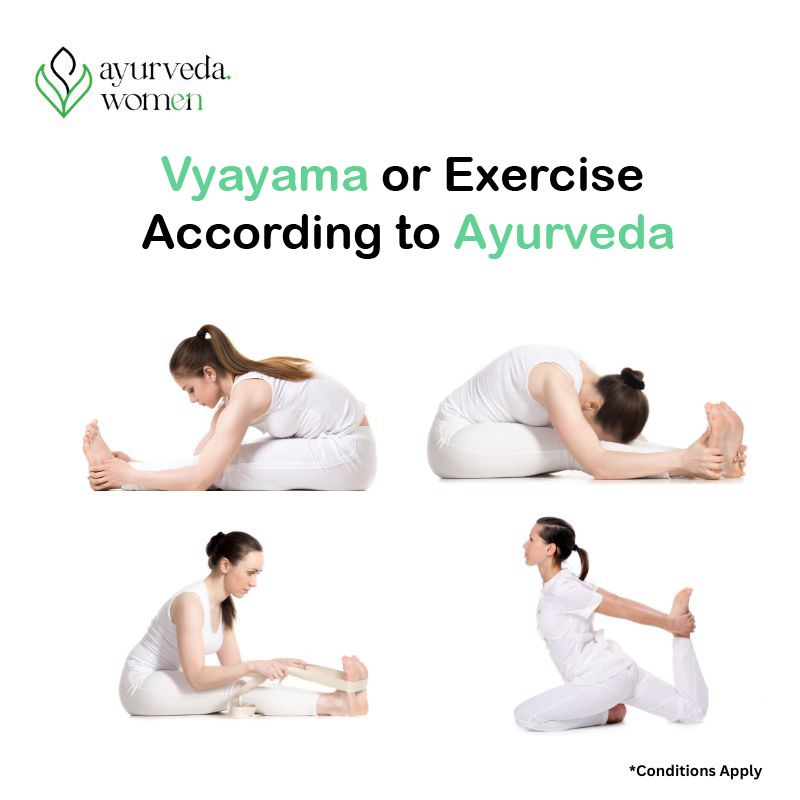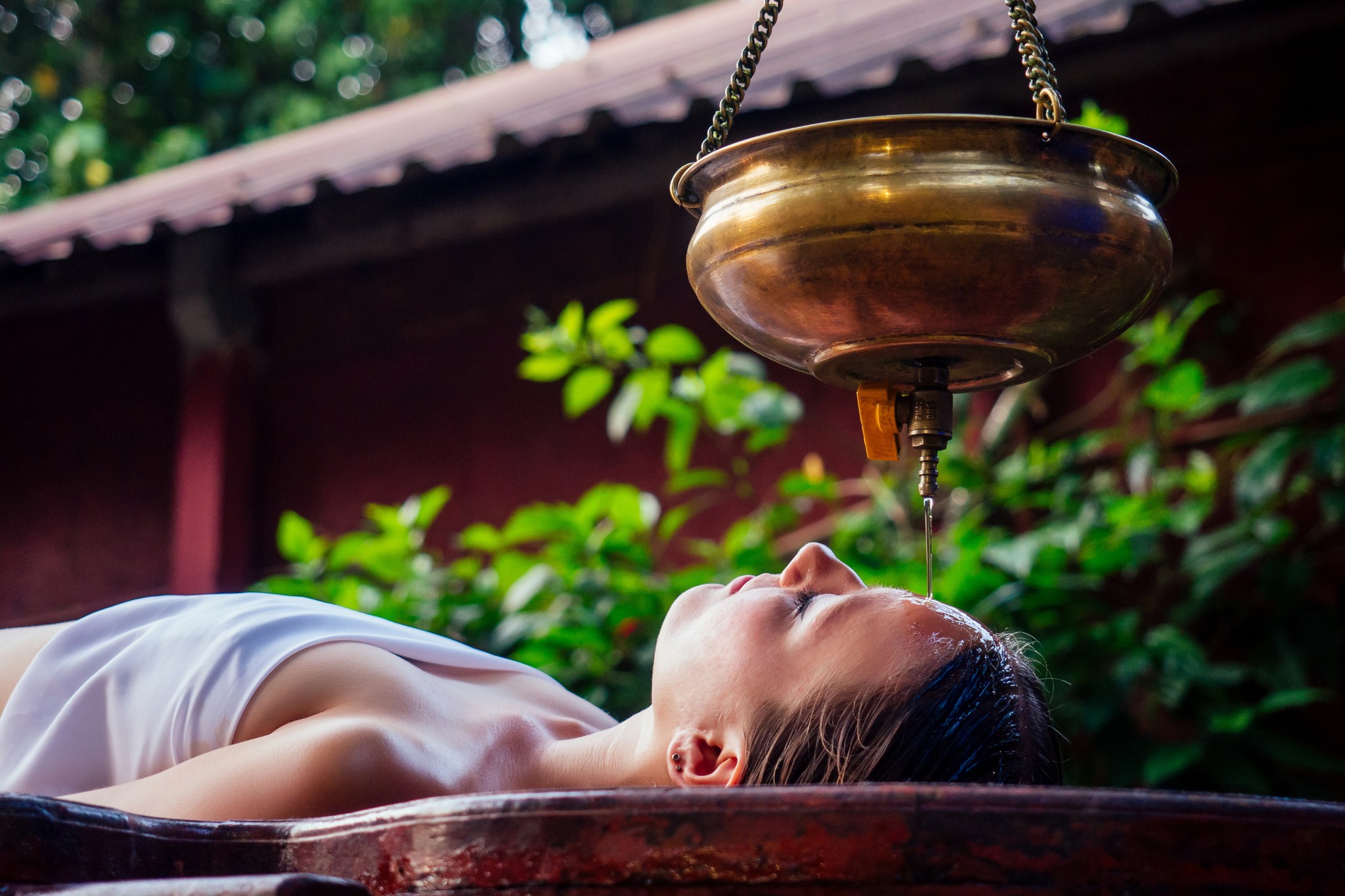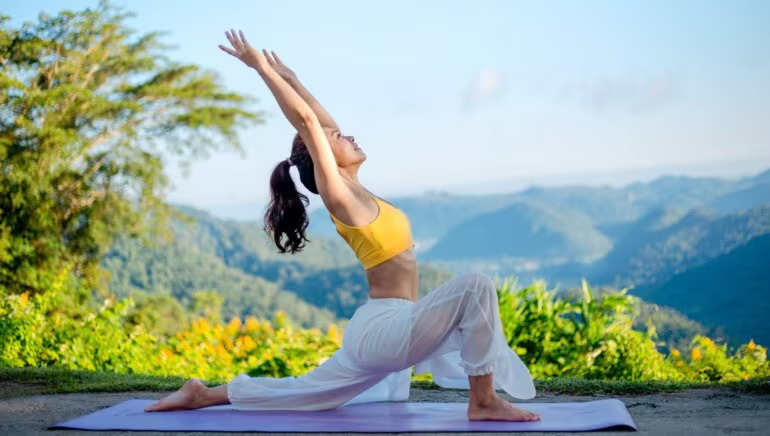Vyayama or Exercise According to Ayurveda

𝐖𝐡𝐚𝐭 𝐢𝐬 𝐕𝐲𝐚𝐲𝐚𝐦𝐚 𝐨𝐫 𝐄𝐱𝐞𝐫𝐜𝐢𝐬𝐞?
Activity that results in physical exertion is considered as Vyayama as per Acharya Sushruta in Ayurveda.
Ayurveda is not just a type of traditional or Holistic medicines, but as the name itself suggests, it’s the “Science of Life”. As Ayurveda explains the Dinacharya (Daily routine for Health Promotion) in its classical texts, Vyayama was also a part of Dinacharya for ages.
As Ayurveda explains the Dinacharya (Daily routine for Health Promotion) in its classical texts, Vyayama was also a part of Dinacharya for ages.
Ayurvedic scholars like Charaka, Sushruta and Vaghbata have mentioned various aspects of Vyayama (Exercise) such as type, frequency, duration, benefits, indications and contraindications of exercise as per the seasons. Apart from these, there are many contexts like chronic diseases and metabolic diseases, “Avyayama” (Physical inactivity or lack of exercise) has been explained as one of the main causes of the ailments. Prameha (Diabetes) and Sthoulya (Obesity) are the most prevalent diseases caused by physical inactivity these days.
Best 7 Benefits of Exercise or Vyayama
- Vyayama (Exercise) helps in establishing the balance between Vata, Pitta and Kapha in our body.
- Exercise also helps in stimulating the functioning of Agni (at all levels) and improves metabolism.
- Improves the strength of the body by increasing the muscles and their tone
- Regulates the proper temperature of the body like a homeostat
- Enhances mental stability and relieves the stress by releasing endorphins and serotonins the ‘feel good hormones
- Delays the aging process by preventing chronic diseases and keeping us fit
- Clears the channels of the body by improving the blood circulation






